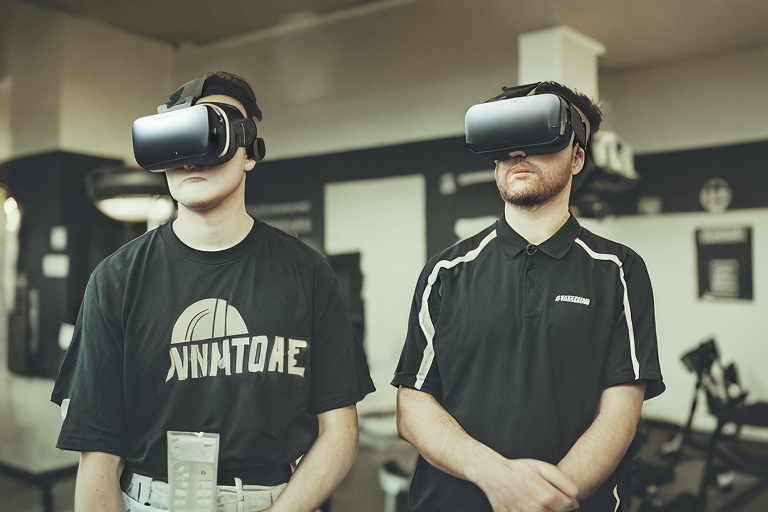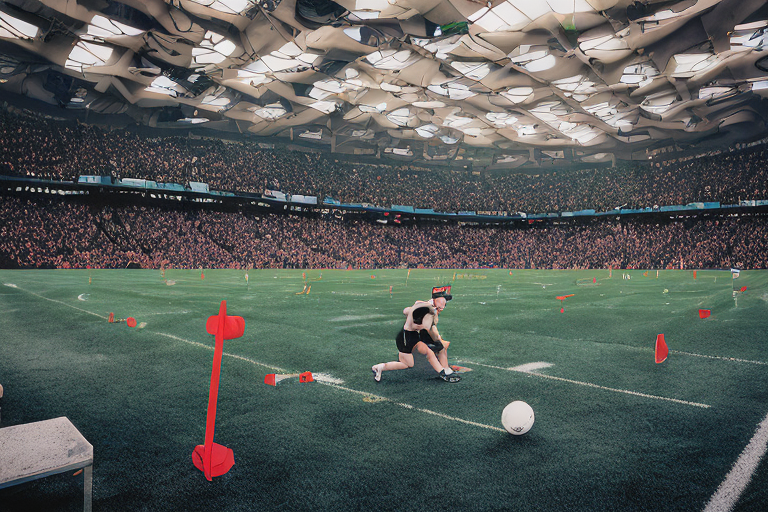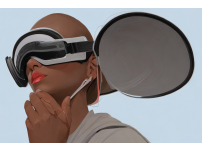스포츠산업의 가상현실(VR)의 미래: 관람경험과 훈련향상(The Future of Virtual Reality in the S…
본문

가상현실(VR) 기술은 최근 몇 년 동안 빠르게 발전하고 있으며, 스포츠를 포함한 다양한 산업에 새로운 가능성을 제공하고 있습니다. 스포츠 산업에 VR의 통합은 팬들이 라이브 이벤트를 경험하는 방식에 혁명을 일으킬 뿐만 아니라 선수 훈련과 경기력을 향상시킬 것입니다.
관객 경험을 향상시키는 측면에서, VR은 팬들을 액션의 중심으로 이동시킬 수 있는 잠재력을 가지고 있어, 이전에는 불가능했던 게임을 360도로 볼 수 있습니다. 예를 들어, VR 기술은 가상 경기장 투어를 제공하고 팬들이 경기장이나 코트에 있는 것이 어떤 것인지 경험하게 하여 게임에 완전히 새로운 수준의 흥분을 더할 수 있습니다. 게다가, VR은 또한 팬들이 게임의 중요한 순간들을 더 자세히 볼 수 있도록 어떤 각도에서든 즉각적인 재생을 제공할 수 있습니다.
훈련 측면에서, VR은 경기 상황과 시나리오를 시뮬레이션하는 데 사용되어 선수들에게 부상의 위험 없이 귀중한 대리인을 제공합니다. 이 기술은 선수들이 통제된 가상 환경에서 의사 결정과 팀워크를 연습할 수 있는 팀 스포츠에 특히 유용할 수 있습니다. 선수들이 다양한 시나리오를 경험할 수 있게 함으로써, VR은 또한 그들이 전반적인 경기력을 향상시키면서 경기 날을 위해 정신적으로 준비하는 것을 도울 수 있습니다.

한국에서는 VR이 스포츠 산업에 통합된 몇 가지 주목할 만한 사례가 있습니다. 예를 들어, 한국야구위원회(KBO)는 투수들을 훈련시키기 위해 VR 기술을 채택하여, 그들이 실생활에서 단 한 개의 투구도 던지지 않고도 제구력과 정확성을 발휘할 수 있도록 했습니다. 또 다른 예는 K리그 (한국 프로 축구 리그)가 선수들의 경기력을 분석하기 위해 VR을 사용하여 팀들에게 선수들의 장단점에 대한 새로운 수준의 통찰력을 제공하는 것입니다.
결론적으로 스포츠 산업에서 VR의 미래는 밝으며, 팬들이 경기를 경험하는 방식과 선수들이 훈련하는 방식에 미치는 영향은 상당할 것입니다. VR 기술이 계속해서 발전함에 따라, 그것이 스포츠의 세계에 가져올 새로운 가능성에 대해 생각하는 것은 흥미롭습니다.
시청자 경험과 훈련을 향상시키는 데 적용되는 것 외에도, VR 기술은 방송 및 라이브 이벤트에 사용하기 위해 탐구되고 있습니다. 예를 들어, VR 방송은 팬들에게 몰입적이고 쌍방향적인 시청 경험을 제공하여, 그들이 자신의 카메라 각도를 선택하고 그들의 선호에 맞는 방식으로 라이브 이벤트를 경험하도록 할 수 있습니다. 이것은 전통적인 방송 방식에 비해 상당한 업그레이드를 제공할 것이며 잠재적으로 스포츠 단체의 팬 참여와 수익을 증가시킬 수 있습니다.

VR이 스포츠 산업에 영향을 미치고 있는 또 다른 분야는 스포츠 의학과 재활 분야입니다. VR 시뮬레이션을 활용하면 선수들이 회복 기간 동안 계속 훈련하고 기술을 유지할 수 있어 부상 재발 위험을 줄이고 재활 과정을 가속화할 수 있습니다.
VR 기술은 스포츠 산업에서 엄청난 잠재력을 보여주었지만, 그것이 그것의 잠재력에 도달하기 전에 여전히 해결되어야 할 과제들이 있다는 것을 주목하는 것이 중요합니다. 예를 들어, VR 하드웨어와 소프트웨어의 비용은 여전히 높고, 서로 다른 시스템 간의 호환성을 보장하기 위해 VR 기술의 표준화가 필요합니다. 또한, VR이 플레이어의 성능에 미치는 영향과 VR 중독의 가능성 및 인간의 행동과 건강에 미치는 영향에 대한 우려가 있습니다.
요약하자면, 가상 현실 기술은 관중 경험을 향상시키고, 선수 훈련을 개선하며, 방송과 스포츠 의학에 새로운 기회를 제공함으로써 스포츠 산업에 혁명을 일으킬 준비가 되어 있습니다. 도전 과제가 여전히 존재하지만 스포츠에서 VR의 잠재적 이점은 향후 몇 년 동안 계속 발전함에 따라 VR을 지켜볼 가치가 있는 기술로 만듭니다.
Virtual reality (VR) technology has been rapidly advancing in recent years, offering new possibilities for various industries, including sports. The integration of VR into the sports industry is poised to revolutionize the way fans experience live events, as well as improve athlete training and performance.
In terms of enhancing the spectator experience, VR has the potential to transport fans to the heart of the action, giving them a 360-degree view of the game that was previously impossible. For example, VR technology can offer virtual stadium tours and let fans experience what it's like to be on the field or court, adding an entirely new level of excitement to the game. Additionally, VR can also provide instant replay from any angle, allowing fans to get a closer look at the key moments in a game.
On the training side, VR is being used to simulate game situations and scenarios, providing athletes with valuable reps without the risk of injury. This technology can be particularly useful for team sports, where players can practice decision-making and teamwork in a controlled virtual environment. By allowing athletes to experience different scenarios, VR can also help them prepare mentally for game day, improving their overall performance.
In Korea, there have been several noteworthy examples of VR being integrated into the sports industry. For instance, the Korea Baseball Organization (KBO) has adopted VR technology to train pitchers, allowing them to work on their control and accuracy without having to throw a single pitch in real life. Another example is the use of VR by the K League (South Korea's professional soccer league) to analyze player performance, providing teams with a new level of insight into their athletes' strengths and weaknesses.
In conclusion, the future of VR in the sports industry is bright, and its impact on the way fans experience games, as well as the way athletes train, will be significant. As VR technology continues to evolve, it is exciting to think about the new possibilities it will bring to the world of sports.
In addition to its applications in enhancing spectator experience and training, VR technology is also being explored for use in broadcasting and live events. For example, VR broadcasting could provide fans with an immersive and interactive viewing experience, allowing them to choose their own camera angles and experience live events in a way that suits their preferences. This would offer a significant upgrade over traditional broadcasting methods and could potentially increase fan engagement and revenue for sports organizations.
Another area where VR is making an impact in the sports industry is in sports medicine and rehabilitation. By utilizing VR simulations, athletes can continue to train and maintain their skills during recovery periods, reducing the risk of injury reoccurrence and speeding up the rehabilitation process.
While VR technology has shown tremendous potential in the sports industry, it is important to note that there are still challenges to be addressed before it can reach its full potential. For example, the cost of VR hardware and software remains high, and there is a need for standardization of VR technology to ensure compatibility across different systems. Additionally, there are concerns about the impact of VR on player performance, as well as the potential for VR addiction and the impact on human behavior and health.
In summary, virtual reality technology is poised to revolutionize the sports industry by enhancing spectator experience, improving athlete training, and providing new opportunities for broadcasting and sports medicine. While challenges still exist, the potential benefits of VR in sports make it a technology worth watching as it continues to advance in the coming years.














댓글목록 0